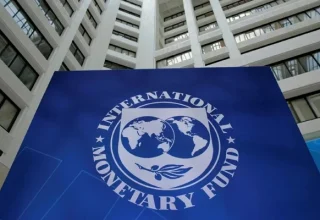ISLAMABAD, Feb 1 (FD): The International Monetary Fund (IMF) has decreased the GDP growth rate projection for Pakistan from 3.5% to 2% for the fiscal year 2023.
According to IMF’s World Economic Outlook (WEO), issued on Tuesday, the country’s GDP growth rate would rebound in the next fiscal 2023-24 up to 4.4%.
The projection by the Washington-based lender, which is in talks with Pakistan regarding the revival of a loan programme stalled since months, is the same as predicted by the World Bank earlier this month.
In its report, titled “Global Economics Prospects” released on January 12, the WB predicted Pakistan’s economic growth to reduce to half — down by 4% to 2% — for the current fiscal year, owing to the precarious economic situation and devastating floods.
Global outlook
In its latest report, the IMF has raised the 2023 global growth outlook slightly due to “surprisingly resilient” demand in the United States and Europe, an easing of energy costs and the reopening of China’s economy after Beijing abandoned its strict COVID-19 restrictions.
It said growth would still fall to 2.9% in 2023 from 3.4% in 2022, but its latest World Economic Outlook forecasts mark an improvement over an October prediction of 2.7% growth this year with warnings that the world could easily tip into recession.
For 2024, the IMF said global growth would accelerate slightly to 3.1%, but this is a tenth of a percentage point below the October forecast as the full impact of steeper central bank interest rate hikes slows demand.
IMF chief economist Pierre-Olivier Gourinchas said recession risks had subsided and central banks are making progress in controlling inflation, but more work was needed to curb prices and new disruptions could come from further escalation of the war in Ukraine and China’s battle against COVID-19.
“We have to sort of be prepared to expect the unexpected, but it could well represent a turning point, with growth bottoming out and then inflation declining,” Gourinchas told reporters of the 2023 outlook.
Strong demand
In its 2023 GDP forecasts, the IMF said it now expected US GDP growth of 1.4%, up from 1.0% predicted in October and following 2.0% growth in 2022. It cited stronger-than-expected consumption and investment in the third quarter of 2022, a robust labor market and strong consumer balance sheets.
It said the euro zone had made similar gains, with 2023 growth for the bloc now forecast at 0.7%, versus 0.5% in the October outlook, following 3.5% growth in 2022. The IMF said Europe had adapted to higher energy costs more quickly than expected, and an easing of energy prices had helped the region.
Britain was the only major advanced economy the IMF predicted to be in recession this year, with a 0.6% fall in GDP as households struggle with rising living costs, including for energy and mortgages.
China reopens
The IMF revised China’s growth outlook sharply higher for 2023, to 5.2% from 4.4% in the October forecast after “zero-COVID” lockdown policies in 2022 slashed China’s growth rate to 3.0% — a pace below the global average for the first time in more than 40 years. But the boost from renewed mobility for Chinese people will be short-lived.
The Fund added that China’s growth will “fall to 4.5% in 2024 before settling at below 4% over the medium term amid declining business dynamism and slow progress on structural reforms.”

































